Pirates have long captured our imaginations, their daring exploits and hidden treasures fueling our sense of adventure. Among the defining aspects of pirates, their tattoos stand out as bold and intriguing symbols of their unique lifestyle. In this article, we embark on a journey through the captivating history of pirate tattoos, tracing their origins and evolution across the ages.
Pirate tattoos have a long and fascinating history that dates back to ancient civilizations. These tattoos held significant cultural and personal meanings for the wearers, often serving as a form of identification, rebellion, or symbols of belonging. Understanding the evolution of pirate tattoos provides us with valuable insights into the lives and motivations of these legendary figures.
- Early Origins of Pirate Tattoos
- Pirate Tattoos in the Golden Age of Piracy
- The Role of Pirate Tattoos in Identifying Pirates
- Evolution of Pirate Tattoo Designs
- Famous Pirates and Their Tattoos
- Controversies and Misconceptions
- Revival of Pirate Tattoos in Popular Culture
- Modern Interpretations of Pirate Tattoos
- Conclusion
- FAQs
Early Origins of Pirate Tattoos
The origins of pirate tattoos can be traced back to ancient cultures such as the Egyptians, Greeks, and Persians. Tattoos were prevalent in these societies, often symbolizing social status, religious beliefs, or acts of bravery. The art of tattooing held immense cultural significance, and its influence can still be seen in the designs and symbolism of modern pirate tattoos.

Pirate Tattoos in the Golden Age of Piracy
During the Golden Age of Piracy, which spanned the late 17th to early 18th centuries, pirate tattoos gained popularity among seafaring outlaws. Pirates used tattoos as a means of identification and recognition within their close-knit communities.
These tattoos often featured symbols such as skulls, crossed swords, and ships, each carrying its own meaning and association.
Also Read 10 Famous Pirate Ships Names your Kids Know
The Role of Pirate Tattoos in Identifying Pirates
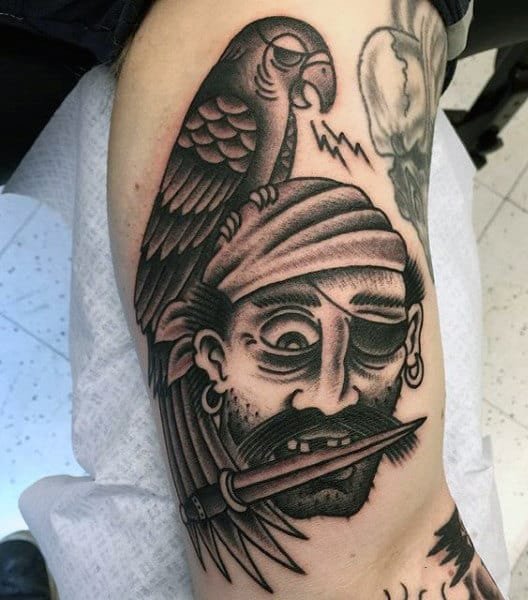
In an era when pirates operated in a clandestine manner, pirate tattoos played a crucial role in identifying fellow pirates. Specific designs and symbols acted as a secret language among pirates, indicating one’s allegiances, achievements, and even criminal history. These codes and symbols helped maintain order and trust within pirate crews.
Evolution of Pirate Tattoo Designs
Pirate tattoos evolved as pirates encountered different cultures and influences during their voyages. Tattoos became an amalgamation of various styles, incorporating elements from European,
Native American, Polynesian, and Asian cultures. This fusion resulted in unique designs that reflected the diversity of the pirate community.
Popular pirate tattoo designs included images of anchors, compasses, mermaids, daggers, and treasure maps. Each design carried its own significance. For example, an anchor symbolized stability and a strong foundation, while a compass represented guidance and the search for new horizons. These symbols served as a constant reminder of a pirate’s purpose and the risks they were willing to take.
Also Read How to Plan the Perfect Road Trip Along the Bay of Biscay Coastline
Famous Pirates and Their Tattoos
Numerous legendary pirates adorned themselves with tattoos, further enhancing their fearsome reputation. One such pirate was Edward Teach, more commonly known as Blackbeard. Blackbeard’s intimidating appearance was enhanced by his thick, black beard, from which he derived his name. He also sported a variety of tattoos, including images of demons and other mythical creatures, which struck fear into the hearts of his adversaries.
Another infamous pirate, Anne Bonny, had her own unique set of tattoos. She wore a distinctive mark on her arm that featured a heart pierced by a dagger, symbolizing her fierce and merciless nature. These tattoos not only embellished her physical appearance but also served as a testament to her indomitable spirit.
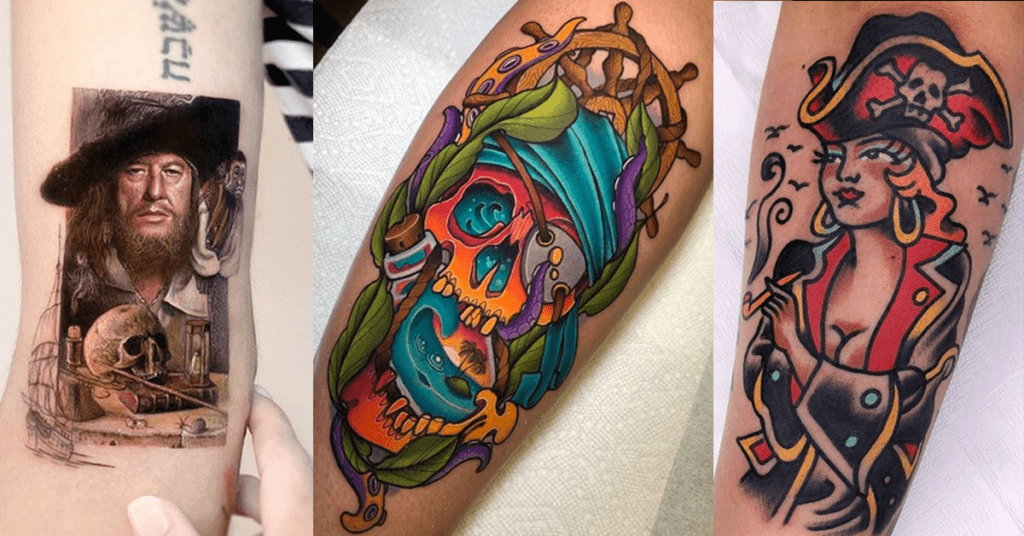
Controversies and Misconceptions
Despite their historical significance, pirate tattoos have often been misunderstood and misrepresented. One common misconception is that all pirates were heavily tattooed. In reality, while tattoos were prevalent among pirates, not all pirates had them. Tattoos were a personal choice and varied among individuals.
Another controversy arises from the misinterpretation of certain symbols in pirate tattoos. For example, the Jolly Roger flag, with its skull and crossbones design, is often associated with piracy. However, it was primarily used to intimidate and strike fear into the hearts of victims, rather than being directly linked to tattoos.
Revival of Pirate Tattoos in Popular Culture
In recent years, pirate tattoos have experienced a revival in popular culture. Movies like the “Pirates of the Caribbean” series and books like “Treasure Island” have brought pirate imagery back into the mainstream. As a result, pirate tattoos have regained popularity among tattoo enthusiasts, who seek to capture the adventurous spirit and allure of piracy through their body art.
Modern Interpretations of Pirate Tattoos
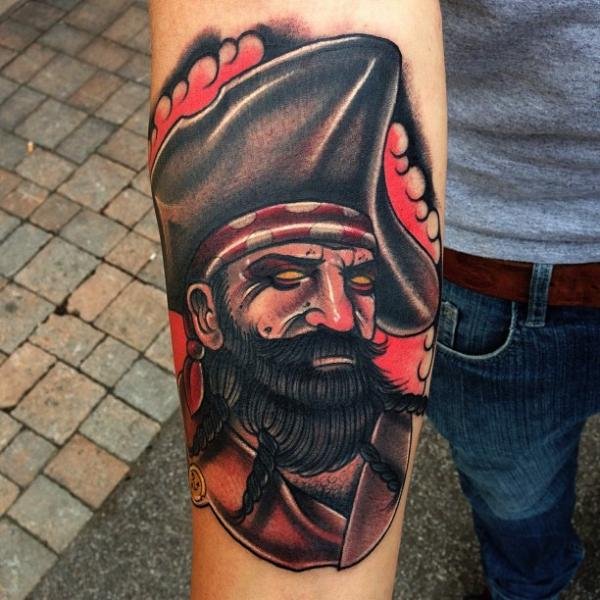
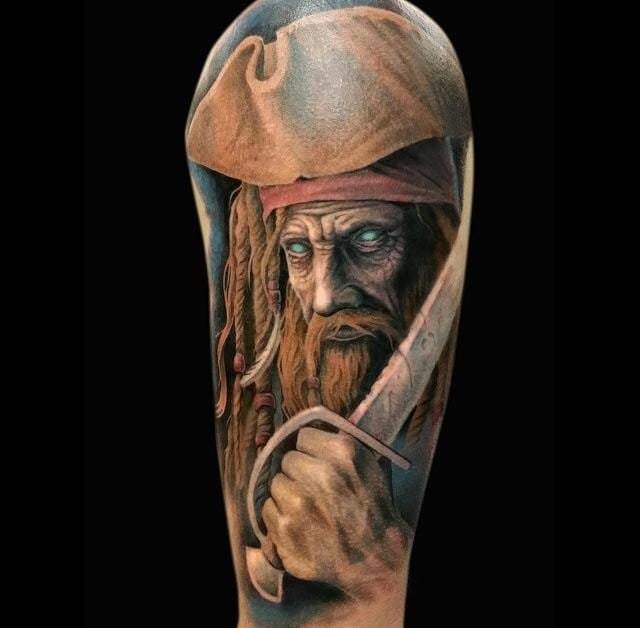

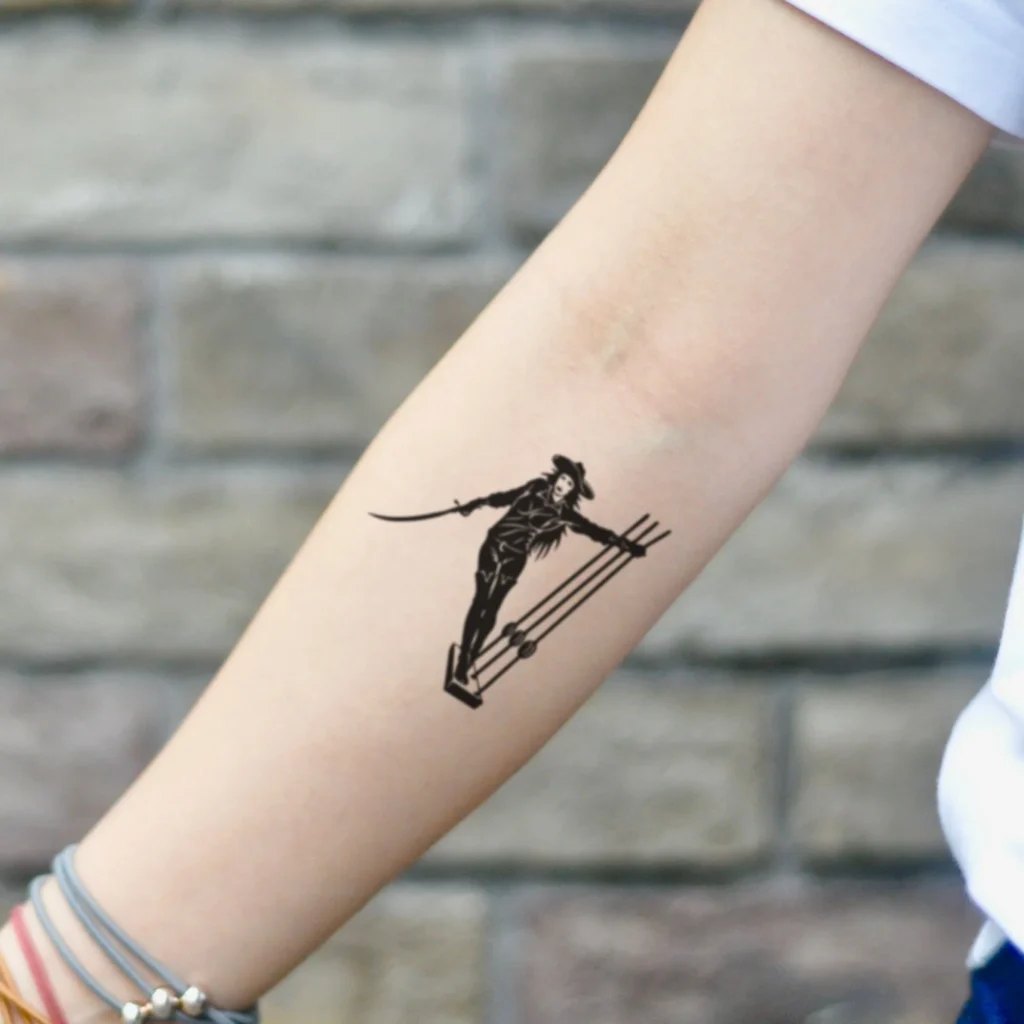
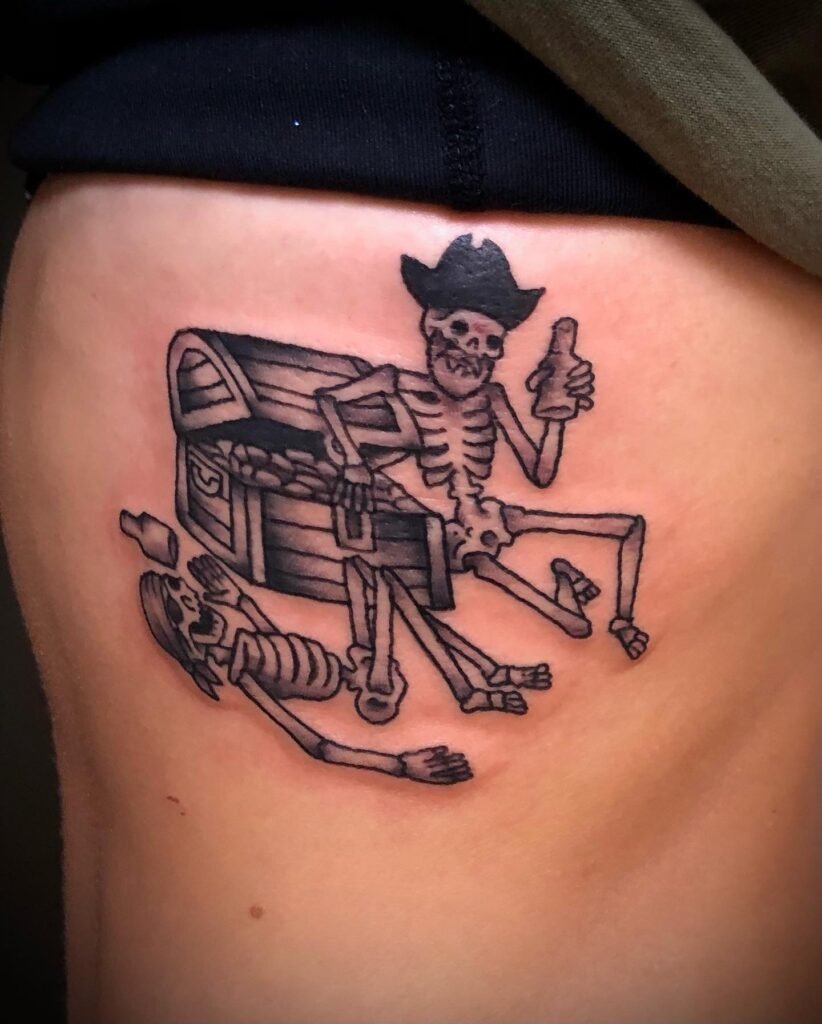

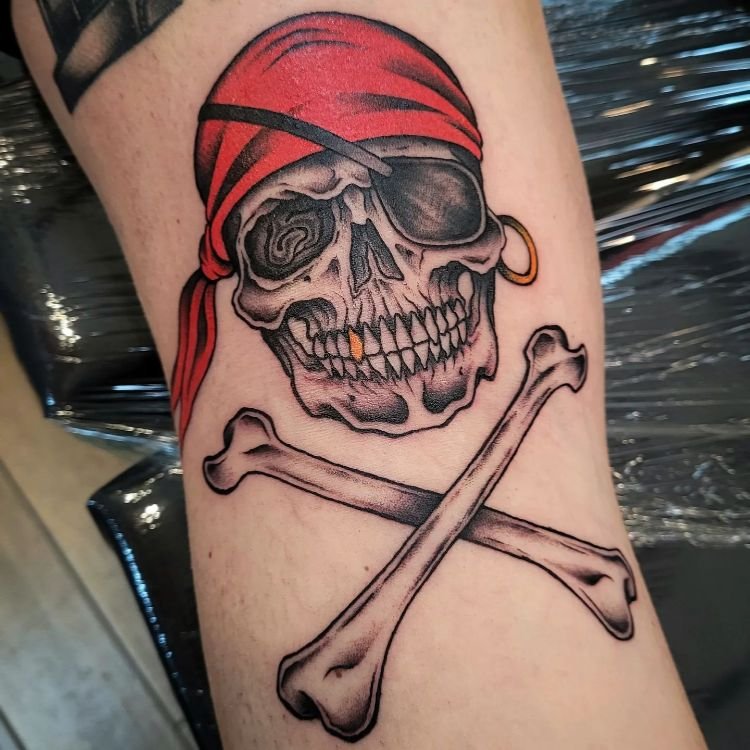
In contemporary tattoo art, pirate tattoos have taken on new forms and interpretations. Artists now incorporate modern elements and styles while still paying homage to the traditional designs. Personalization and customization have become essential aspects of pirate tattoos, allowing individuals to incorporate their own stories and symbolism into the artwork.
Today, pirate tattoos are not limited to those who actually engage in piracy. They have become a symbol of freedom, independence, and the pursuit of one’s dreams. Many individuals choose to get pirate tattoos as a way to express their adventurous spirit or as a reminder to embrace their inner rebel.
Conclusion
The history of pirate tattoos is a captivating journey that spans across cultures and centuries. From their early origins in ancient civilizations to their prominence during the Golden Age of Piracy, pirate tattoos have evolved and transformed, becoming an iconic part of pirate lore. Today, these tattoos continue to captivate our imaginations, representing the spirit of adventure, rebellion, and the enduring allure of the high seas.
You may also like,
- Brief History of the Bay of Biscay: From Pirates to Whaling
- 10 Famous Pirate Ships Names your Kids Know
- Steve Jobs Yacht – Venus Pictures, Facts & Controversy
- Amerigo Vespucci is 90 years old & Still The Most Beautiful Ship In The World
FAQs
- What is the oldest recorded instance of a pirate tattoo? The oldest recorded instance of a pirate tattoo dates back to the ancient Egyptian civilization, where tattoos were found on the bodies of mummified individuals believed to be sailors or pirates.
- Did all pirates have tattoos? No, not all pirates had tattoos. While tattoos were prevalent among pirates, getting a tattoo was a personal choice, and some pirates may have opted not to get inked.
- Were pirate tattoos a form of rebellion? Yes, pirate tattoos were often seen as a form of rebellion. Pirates lived outside the law and embraced a life of adventure and freedom. Getting tattoos was a way for them to express their defiance of societal norms and to mark their affiliation with the pirate brotherhood.
- Are pirate tattoos still popular today? Yes, pirate tattoos continue to be popular today. The mystique and symbolism associated with pirate tattoos have made them enduring motifs in contemporary tattoo art. Many people are drawn to the sense of adventure and rebelliousness that pirate tattoos represent.
- Can I get a pirate tattoo if I’m not a pirate? Absolutely! Pirate tattoos are not limited to those engaged in piracy. People from various walks of life get pirate tattoos as a way to express their love for pirate lore, their adventurous spirit, or their affinity for the sea. Tattoo artists can work with you to create a design that resonates with your personal story and preferences.
- What is the oldest recorded instance of a pirate tattoo? The oldest recorded instance of a pirate tattoo dates back to the ancient Egyptian civilization, where tattoos were found on the bodies of mummified individuals believed to be sailors or pirates.
- Did all pirates have tattoos? No, not all pirates had tattoos. While tattoos were prevalent among pirates, getting a tattoo was a personal choice, and some pirates may have opted not to get inked.
- Were pirate tattoos a form of rebellion? Yes, pirate tattoos were often seen as a form of rebellion. Pirates lived outside the law and embraced a life of adventure and freedom. Getting tattoos was a way for them to express their defiance of societal norms and to mark their affiliation with the pirate brotherhood.
- Are pirate tattoos still popular today? Yes, pirate tattoos continue to be popular today. The mystique and symbolism associated with pirate tattoos have made them enduring motifs in contemporary tattoo art. Many people are drawn to the sense of adventure and rebelliousness that pirate tattoos represent.
- Can I get a pirate tattoo if I’m not a pirate? Absolutely! Pirate tattoos are not limited to those engaged in piracy. People from various walks of life get pirate tattoos as a way to express their love for pirate lore, their adventurous spirit, or their affinity for the sea. Tattoo artists can work with you to create a design that resonates with your personal story and preferences.
